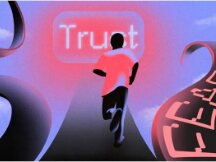Read the current and future state of Web3.0 in one article.
Sam Altman, president of US startup incubator Y Combinator, tweeted that the average ROI in the 2020s will be worse than it was in the 2010s, but Web3 can still achieve positive results as in 2010, but most of the venture capitalists. will remember .. Elon Musk said, "Web3 seems inaccurate."
The public exchange of top IP addresses for Web3.0 has led to a rapid debate in the industry about support for Web3.0. It's been 7 years since the idea for Web3 was announced. From no one watching, to the crazed mass publicity of CryptoVC and the current polarization, naysayers say Web3.0 is useless and Web3.0 needs a doctor. Supporters of his case have worked to make the actual transcript of this statement available online.
So the truth is Web3.0 and why should we build Web3.0? How far has Web3.0 been developed?
1. The origin and definition of Web3.0, and why Web3.0 is needed
Dr. Gavin Wood unveiled the new Web3.0 vision in 2014 and launched the Web3 Foundation. His idea is this: Web3 is a vast movement and protocol designed to make the Internet more decentralized, verifiable, and secure. Web3's vision is to achieve serverless online distribution where users control the Internet through their personal lives, data and fate. ; Web3 will introduce a new world of digital marketing, create new business models and innovations, break platform monopoly and promote bottom-up expansion.
Web 1.0: Read-only Internet
The Web1.0 era was roughly 1991-2004, and in the Web1.0 era, users were left with no choice but to navigate text, photos, and video content manually, and with little input. interaction between what a website provides and what a user does. find. There's no. Meanwhile, many web portals like Google, Yahoo, Sohu, Sina, etc. were born to improve advertising and finance by getting users to click and view through posting on multiple websites.
In the era of Web 1.0, there was little content for developers, and most users were only provided by the information platform.
Web2.0: Read and write online
From 2004 to today, it was the era of Web2.0. The concept of Web2.0 was first developed by Darcy DiNucci in 1999, and sponsored by Tim OReilly and Dale Dougherty at the OReilly Media Web2.0 conference in late 2004, and Web2.0 was rushed will be accepted by the world.
With the growth of internet marketing, some internet business models have gradually emerged. Whether blogging, social media platforms, or online communities, the benefit of these sites is that users can create their own content and interact and interact with the site and other uses.
However, the Web2 network is owned and operated by and affiliated with Internet companies. Most of the users are free to use, but the users themselves are not the personal data users of these platforms. Moving from Web1.0 to Web2 In fact, many Internet companies have moved from Web1.0 to Web2.0, and even in the era of Web2.0, the industry of Web1.0 continues to grow.
The Web2.0 itself is still evolving, and especially with the changes in machine learning and algorithms, the business model for Web2.0 is also evolving. For example, a website might start to learn and analyze user behavior and then recommend different content to another user.
Web3.0: Internet of values
Web3.0 differs from Web1.0 and Web2.0, and changes and modifications of Web2.0 also vary. Web3.0 is not only a change in technology, it is also a change in industry and user standards.
In Web3.0, content is created by users and data is generated by users, which is why Web3 is called the Internet of Value. The 3.0 website is open source, but is integrated by the cryptoeconomy. Independent of normal organization, code written as indicated. We value open source software, user ownership of data and unauthorized access, and establish a good understanding of privacy and collaboration.
Web3.0 was first claimed in 2014 by Gavin Wood, co-founder of Ethereum and founder of Polkadot. Gavin believes that Web 3.0 is an application process that provides a building block for application developers. This blockchain replaces traditional web protocols such as HTTP, AJAX and MySQL and offers new ways to build applications. These technologies provide users with the robust and reliable data they receive and provide secure information and the information they pay for will remain secure. ~
The Web3.0 Vision: Anyone can manage their digital (personal) assets, assets and information, and then manage their own destiny.
Why do you need Web3.0?
Given the current state of Web 2.0, there are three main reasons for developing Web 3.0.
1. The centralized Web 2.0 platform adapts to longevity estimates, and the relationship between the platform and network partners has changed from positive to negative.
Centralized Web2.0 platforms follow life predictions, first seen by Chris Dixon, A16Z partner. At the initial stage of development in the middle of the platform, in order to find users and organizations to solve platform problems, the platform will do its best to engage all parties outside, l The objective is to improve the performance of the network. Platform.
As the adoption of centralized platforms enables the development of S-touch, the impact of centralized platforms on users and third parties continues. As this growth curve shifts upward, the relationship between the platform and other network participants (including users, developers, developers, and affiliates) goes from positive to zero.

Right now, if the platform's revenue continues, it will have to remove user data and compete with other players in the network.
These include Microsoft and Netscape, Google and Yelp, Facebook and Zynga, Twitter and third parties, and Epic and Apple.
For third parties, the transition from partnership to competition is like an “exchange”. At the same time, major contractors, manufacturers and investors are aware of the shortcomings of building a foundation, and these shortcomings often tackle new block construction. And Web3.0 offers a new way for all participants to support different times while making their own preferences.
2. The oligopolistic situation slowly emerging in the next phase of Web 2.0 development makes the security and privacy of user data even more difficult.
Information security and privacy issues have been the buzzwords of the Internet industry in recent years. Faced with internet giants and centralized sites, we all have transparent user portraits, which will make certain user behaviors dominated by any household. This issue of information security and confidentiality is a key issue for the Web2.0 infrastructure and the issues of centralization of the Internet. These issues will not go away with the smart update of Web2.0, but will only get worse.
If you are using some software from Web2.0, you often have problems forcing authentication only by registering or logging in, for example by logging into a cell phone directory, you are not Yes? Sometimes you can't because Web2.0 has slowly entered the oligopoly level.
One of the visions of Web3.0 is that everyone can manage their digital (personal) assets, assets and information, and then manage their own destiny. This does not mean that data in many places cannot be authorized by the site, but the ownership and copyright of the data must be returned to its user personally, and in case of desensitization, restricted access may be. allowed. For example, patient care records restrict access to medical records in the event of a grievance, thereby promoting research and development.
3. From Web1.0 to Web2.0 Users have been aware of the shift from UI to content developer, but the relationship between production has not changed.
Web2.0 Business Model Internet businesses are using Internet technology to effectively and massively eliminate data asymmetry, reduce transaction costs, modify existing intermediaries, and create new media models. The major internet platforms have become new intermediaries and gained huge market share, creating new monopolies. Take the example of taxis, after Didi joins Kuaidi almost all the drivers and passengers in the car call. It is very difficult for calling platforms in other seasons to develop, and it is also very difficult for drivers and passengers to exit the Didi platform. The main goal of the DDD platform is to make the business owners money, increase as much as possible and share to get the most out of it. .
Web 2.0 Internet companies are monopolizing the market by obtaining tons of information about service providers and service users. Does the Web3.0 protocol have this problem? Currently non-existent, take as examples recent discussions on OpenDAO, MetaDAO and GasDAO projects, which airdrop tokens for real users in OpenSea, Metamask, Ethereum and use airdrop tokens for a group of people. users. Easily break the Web2.0 monopoly.
Web3.0 will create a new digital world, create new business models and business models, and create many new technologies below. The emergence of Web3.0 will take us to a new level in the “efficient, honest, reliable and profitable” Internet world.
Second, the technology release group of Web3.0
Many head mechanisms such as a A16z, coinbase, mulicoin investment to search: What will it? Currently, web3.0 is a group of web3.0 in the future of web3.0.
Based on the development of Web3.0 and our understanding of Web3.0, CreditEase Blockchain Research Institute also wrote an overview of the core technology group of Web3.0.

Web3.0 technology technology is broadly divided into process, state level, state level, state level, system wide, system to system, system to system. ........... ..... stage.
to pose
Distributed storage of blockchain-related information. There are currently three big stars in business: IPFS, Arweare and Swarm.
The blockchain storage cost being very high, Web3 solutions are often spread over several chains. IPFS is a decentralized peer-to-peer hypermedia protocol whose incentive layer is Filecoin, which allows nodes around the world to store and retrieve this information. Swarm is also a variant of shared storage, the difference between Filecoin is that the support for Swarm is built in and goes through smart contracts on the Ethereum blockchain which store and store data. . Arweave uses a different method. He promises to be firm. That is to say a single payment, permanent access.
state layer
The state layer extends to every state that arises and requires the distribution of data and the ability to interact with each other. A state layer is usually made up of public chains like Bitcoin, Ethereum, Solana, etc. Of course, in practice, the state layer can be divided into state transition layer, trust layer, partitioning layer, P2P layer, etc. public channel. Optional technological output, so this part of the sentence is no longer subdivided.
Now layer is the most important thing on behaviors, but other chain is also catching. There are strong ecology ecology is strongly developed ecology, even if web3.0 Againstation application is often bonded by LOGELOUD 'ecological process.
compute layer
The counting process allows people to tell the state process to do whatever they want. More specifically, it refers to state technology converters like EVM, WASM, etc.
Ethereum Virtual Machine, short for EVM, is a computer emulator that can deliver the performance of a real computer in complete isolation. With the Ethereum virtual machine, the logic specified in the smart contract can be realized and the state changes that occur in the Ethereum state machine can be accomplished.
layer on
Most components do not require advanced technology for Web3, but are often the most important choice for a variety of Web3 applications. The components are designed in the standard and standardized smart contract models are reused.
The selected process options are query layer (Graph, dfuse), Oracle (Chainlink, Band Protocol), DID, DDNS, digital assets (BTC, ETH, etc.), cryptocurrency (ERC20, ERC721, etc. .), etc.), Stablecoin (USDC, DAI) etc.
Expandable container layer
The continuous transport process can now be referred to as the Layer2 protocol. It usually includes 6 categories: Sidechain, State Channel, Plasma, Optimisitc Rollup, ZK Rollup, Volition and more.
These layers are essential for improving Layer 1 performance, improving scalability, delivering encrypted messages, using computation, and supporting the broader activity of Web3.0. You can read "Ethereum Layer 2 Expansion, General Trend" for more details on this section, so I won't repeat it here.
user control layer
Without a set of user controls, it is difficult for end users to join. User control layer includes Exchange, Bag, DAO, Broswers, etc.

Most companies see Wallet as a gateway to Web3.0. The most popular wallets are Metamask, imToken, TokenPocket, etc.
application layer
The application layer of Web3.0 is generally a distributed application, there are many types, and the main applications currently being developed are DEFI, GameFi, Chat, Media, Ecommerce, and Security.
By far the best developers are DeFi and GameFi. We will be closely monitoring the developer for the next development of Web 3.0. In addition, the Star application protocol such as Helium to provide open wireless networks, Audius for music streaming, Livepeer for transcoding and video streaming and Mirror as a distributed domain platform are expected to be the first. applications of their careers. The era of Web 3.0. ~
In addition to the main categories mentioned above, Web3.0 has remote end user versions, such as Trusted Execution Environment (TEE), Internet Protocol (IP), Hybrid Network Packet Routing. , etc. It is generally listed as the primary category for Web3.0 in the industry. Although these technological processes are far from end users, there has been some success. For example, block distributions such as dRoute, BloxRoute, etc., and combinations of data networks such as NYM.
Some of these categories are not part of the keychain and are not yet considered essential for DApp development, such as layer 2, request layer, application layer, user layer used, etc. These groups will be important for future development and will be included due to greater growth.
Third, the development of Web3
In addition to the above Web3.0 technology output category, the industry also affects the Web3.0 industry standard. Researching the Web3.0 industry standard typically involves three factors.
1. Install the Web2.0 application for Web3.0 DApp.
Exploration of DApps for Web3.0 has been ongoing since 2017. Initially, the business strategy of Web3.0 developers was to measure applications on Web2.0 and build DApps on Web3.0. These DApps created the first Web3.0 product matrix.

While these development strategies are not necessarily the final improvement of Web3.0, they also affect the research process at the initial stage of Web3.0 development.
2. Reconfigure the infrastructure and application protocols of the Web3.0 network and start building the Web3.0 kernels.
Since upgrading from Web2.0 to Web3.0 is not a general overhaul, but a complete overhaul and innovation, a general overhaul of devices, industries and design, Web3.0 has been redesigned from top to bottom, redesign and implementation. .
Most companies agree that Web3.0 follows the concepts of “heavy protocol” and “light application” and that the following procedures can capture the best value. The “fat protocol” theory believes that the blockchain and Internet value capture models are different. The value of the Internet age is generally captured by the application layers, such as Google, Facebook, Amazon, Alibaba, Tencent, etc., which are the tenets of the Internet. TCP / IP, HTTP, etc. cannot capture the value.
The Web3.0 era is different, the cost is concentrated in the base protocol, and a small part of the cost is distributed in the application layer, creating the form of “big protocol” and “thin application”. Currently, Ethereum is one of the classic examples of "local procedures".
Thus, since the development of Web3.0, many star projects in the fields of DeFi, GameFi, Metaverse, etc. were born in the application layer, tab but there is no bigger application like Tencent on Web2.0. For example, this gaming chain, Axie Infinity, already has over 25 million players and has over $ 2 billion in community financial assets (52,000 ETH 21 million AXS). However, its market value is still far from the basic public chain "Fat Protocol".
3. New Web3.0 client project design innovation: the goal of rewarding consumers
Regarding the client model of the recent new Web3.0 project, there is an idea to make a cool start of the project from drop to group is. Large companies such as OpenDAO, Galss.xyz, MetaDAO and GasDAO have adopted these standards.
For some, this model is an upgrade from Web2.0 to Web3.0. In the age of Web2, user data is in the hands of the root platform. The main engine of ByteDance is packaged and rated by a wide range of users. Lots of package information like wealth management, sightseeing and other essentials clearly indicate the value. In order to deliver a product or content to a good customer, you have to spend money to buy it, and only through multiple machines can you deliver your product or content to the customer. Data users in the Web2.0 era have supported major platforms, but data rates have not been sent back to the users themselves, and this phenomenon will not exist in the era. from Web3.0.

The overcrowded drop mechanisms of OpenDAO, MetaDAO, and GasDAO have proven the B-side client and C-side user data achievement of Web3.0. In the age of Web3.0, all new rules and applications need to start early, find the right users, and then communicate the benefit of group policy to the community. . No more intermediaries and platforms, and projects can directly appeal to target users.
Fourth, the future of Web3.0
I want to reflect on the future of Web3.0 by describing the daily life and work of natives in the era of Web3.0.
It is January 6, 2030. I wake up at 8 am, go to bed, take out my phone, and see a lot of unread notifications.
Part 1 Note: The virtual casino product created at Decentraland was 1000 tokens yesterday, which were exchanged for the Metamask wallet.
Chapter 2 Note: The 3D model was completed yesterday has been completed, 100 tokens have been deducted from payment quickly, and 2,333 nodes have been included with the service to help you complete this instruction.
Third Report: Your favorite cryptocurrency expert, Song Ting, released a new NFT "Mirror of Power" image. The ship delivers goods to the port of Izmir.
Put down your phone, get up, wash, and start making breakfast so you can start the day on time.
I usually work in 3 DAO organizations. One of them is BitDAO, who is responsible for product development and recently led the development of DeFi3.0 products. Different meta-edge situations need to be made more personal.
You decide to manage your assets outside of working hours. Allows personal data to trusted employees and sends asset authentication credentials to professional investment firms Report says X token exchange may go up to 4% next week. So you open DEX and immediately exchange it for a stable currency. Thanks to the success of the proposed new algorithm, this process only takes a few milliseconds.
To join a DAO business, you will need to perform a thorough analysis of your digital account to prove that you have sufficient funds and that you are at risk. Open your own DID-managed wallet, aggregate payment information feeds from the past two years, and agree on the physical oversight as well as investments KYC gets elsewhere. After a while, you will receive multiple signatures, use your DID to verify your identity, register for 100,000 tokens, and vote for a DAO legal entity.
After all this, you decide to rest. Open Audius to listen to new songs from your favorite artists, check the list to see if there are any new songs you like, and if you do, you can buy NFT to get it. I inadvertently click on Livepeer again while listening to music, but unfortunately the animations I am following have not been changed. When I was bored I clicked on an article in Brave browser and unexpectedly the article had a classified ad.
All interference, payments and communications necessary for the above tasks can be viewed through the decentralized virtual world machine of Web3.0, which runs on the contract computer and on each node, and without a root server. . However, for the average user, whether a wallet or a browser, Web3.0 access is different from the previous experience of internet-enabled devices using Web2.0 10 years ago. , but he did not see it.

Scan QR code with WeChat










